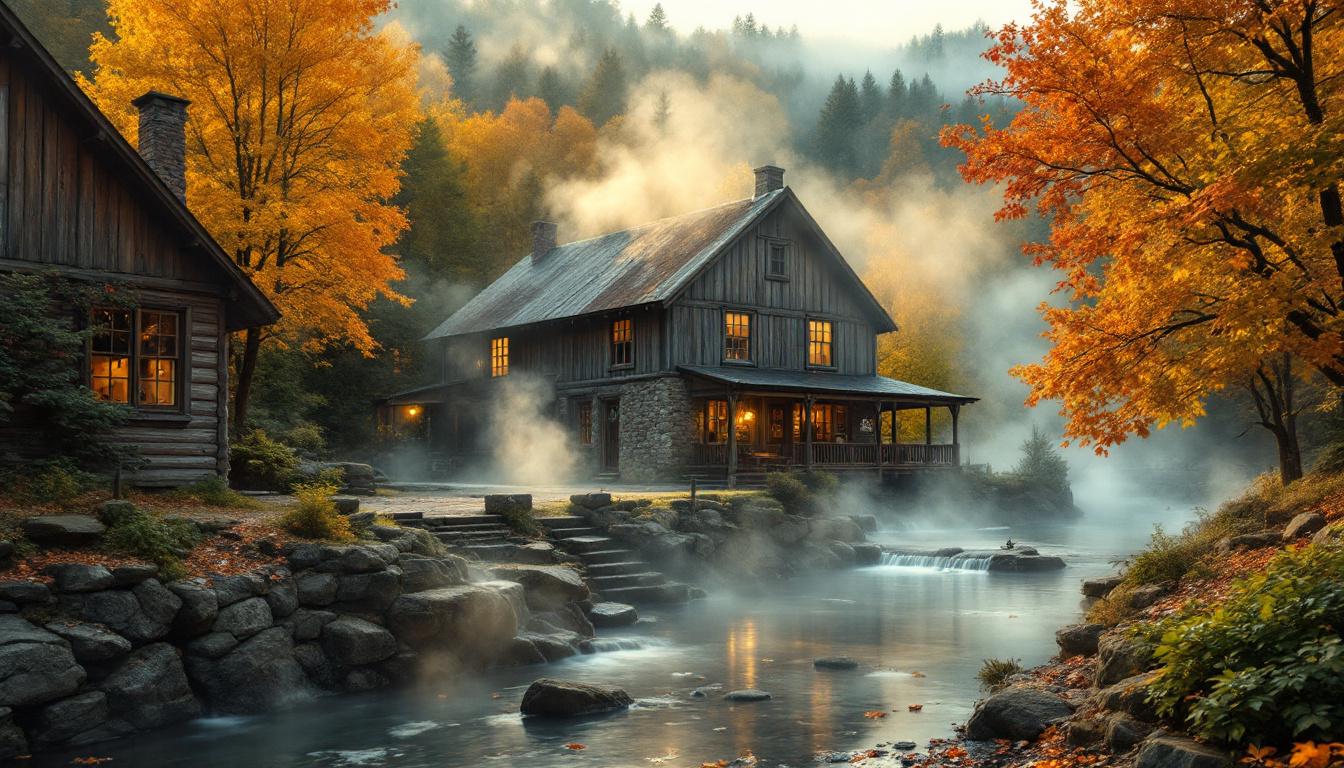Tucked away in the Blue Ridge Mountains where North Carolina meets Tennessee, Hot Springs represents everything mass tourism threatens to destroy. This Appalachian Trail town of just 538 residents has spent decades quietly protecting something precious: America’s only trail town with natural hot springs flowing directly through its historic downtown.
But locals are getting nervous. As Gatlinburg transforms into a commercialized theme park attracting 14 million visitors annually, Hot Springs residents watch with growing concern. They’ve witnessed what unbridled tourism does to mountain communities, and they’re determined not to let it happen here.
The tension is palpable. Community meetings buzz with phrases like “unbridled, unsustainable growth threatening our natural environment and beloved sense of community.” Residents aren’t anti-tourism—they’re pro-preservation, and there’s a significant difference that every respectful traveler should understand.
Why residents fear becoming another Gatlinburg
The commercialization they’re actively avoiding
Drive through Gatlinburg today and count the chain restaurants, massive resorts, and tourist traps that have consumed its authentic mountain character. Hot Springs residents have watched this transformation with horror, knowing their 3.4-square-mile town could face similar pressures from developers eyeing their unique thermal springs.
Community strategies to maintain authenticity
Local zoning deliberately favors renovating historic structures over new construction, effectively blocking chain establishments that require modern building standards. When semi-trucks recently started using their narrow downtown streets as an I-40 detour, residents organized immediate traffic management campaigns, demonstrating their commitment to preserving pedestrian-friendly infrastructure.
The environmental protection measures locals champion
Sacred springs require constant vigilance
The town’s naturally heated mineral springs, considered sacred by Indigenous peoples for centuries, face modern threats from increased foot traffic and potential development pressure. Local steering committees actively promote Leave No Trace principles, understanding that their geological treasure requires educated visitors, not massive crowds.
Sustainable tourism limits under discussion
Post-Hurricane Helene recovery efforts emphasize rebuilding with sustainable tourism models rather than simply maximizing visitor numbers. Community workshops regularly address permit systems similar to those protecting other sensitive natural areas, ensuring the springs’ thermal recharge zones remain undisturbed by overdevelopment.
What locals actually want from visitors
Respectful engagement over Instagram validation
Residents welcome travelers who understand they’re visiting a living community, not a tourist attraction. They appreciate visitors who support locally-owned businesses, respect quiet hours, and recognize that downtown Hot Springs serves residents first, tourists second. The town’s fiber optic infrastructure improvements show they’re not anti-progress—they’re pro-thoughtful development.
Cultural preservation through educated tourism
The community encourages visitors to learn about Appalachian heritage and the springs’ cultural significance rather than simply seeking social media content. Local artisans and the authentic mountain craftspeople offer genuine cultural exchanges that benefit both visitors and residents while preserving traditional practices.
How to visit responsibly
Supporting the protection efforts locals champion
Choose the locally-owned Hot Springs Resort & Spa over chain accommodations when they eventually arrive. Visit during shoulder seasons when the town can better accommodate guests without straining infrastructure. Engage with local guides who understand both the springs’ healing properties and the community’s preservation efforts.
Understanding the delicate balance
Current visitor estimates suggest Hot Springs receives roughly 200,000-300,000 annual visitors compared to Gatlinburg’s 14 million—a manageable scale that locals want to maintain. Recent advisories encouraging non-essential visitors to delay trips during post-Helene recovery demonstrate how seriously residents take sustainable tourism management over short-term economic gains.
Planning your respectful Hot Springs experience
When locals welcome visitors most
Spring and fall seasons offer the ideal balance of comfortable weather and manageable visitor levels. The town’s recovery hub coordinates information about current capacity, ensuring visitors arrive when local businesses can provide quality experiences without overwhelming community resources.
What the community hopes you’ll take away
Residents want visitors to experience the profound peace their sacred thermal springs provide while understanding the responsibility that comes with accessing such places. They hope you’ll return home as an advocate for authentic mountain communities rather than commercialized tourism destinations.
Hot Springs offers something increasingly rare: a genuine mountain community that prioritizes preservation over profit. Respect their wishes, support their values, and you’ll discover why some places are worth protecting from the very tourism that sustains them.
The choice is yours—visit as a thoughtful guest who honors what locals are trying to preserve, or stay away until you’re ready to travel with that level of respect.
